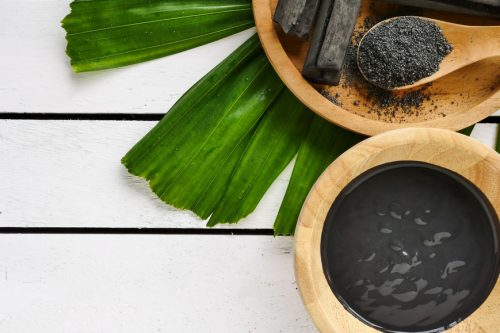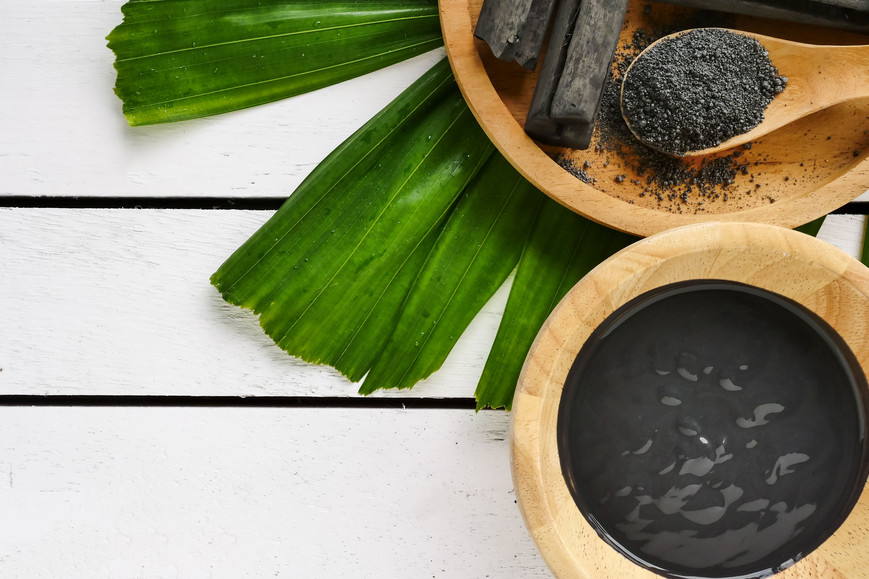
Activated charcoal is all the rage in the blogosphere right now but does this type of man-made coal live up to the hype? We have talked with some of our dental health professionals to see whether there are any real benefits of applying activated charcoal products on to your pearly whites, and the answer was sobering.
What Is Activated Charcoal and What Does It Do?
Charcoal is a form of carbon produced when one heats organic matter such as wood and bone without oxygen being present. When gases and high temperatures are added to the mix, charcoal becomes ‘activated’ through a process that leaves plenty of microscopic ridges on its surface.
Activated charcoal peddlers claim that these tiny changes in the material’s structure can capture nasty toxins once introduced in the human body. As a result, activated charcoal has been advertised as a wonder detoxifier and added into many personal care and nutrition products over the years. But experts have a different opinion.
The Hype’s Origins (in Short)
 Toothpaste that contains activated charcoal is marketed as an effective way of cleansing your mouth of toxins, dirt, and stains. Manufacturers back this claim by underlining activated charcoal’s detox prowess once it reaches your intestines. As a result, if the charcoal can give your gut a nice cleanse, it may likely keep your teeth in top shape too, activated charcoal fans suggest.
Toothpaste that contains activated charcoal is marketed as an effective way of cleansing your mouth of toxins, dirt, and stains. Manufacturers back this claim by underlining activated charcoal’s detox prowess once it reaches your intestines. As a result, if the charcoal can give your gut a nice cleanse, it may likely keep your teeth in top shape too, activated charcoal fans suggest.
An army of bloggers also claim that charcoal’s ‘whitening’ properties were first put to a test and successfully passed that test in Ancient Rome. According to these bloggers, ancient Romans loved charcoal in their toothpaste as many of them enjoyed a more ‘abrasive’ oral care product. This might be why ancient ‘toothpaste’ found in their homes contained really tough ingredients, such as oyster shells, crushed bones, and even tree bark. The idea was to get rid of any unsightly stains on the teeth in an aggressive way, just like you would do with sandpaper.
Fast-forward 1,500 years later, activated charcoal and oyster shells no longer appear in people’s toothpaste as the public started to enjoy less harsh oral care products such as herbs and snail shells. But in the 19th century, charcoal got back into the spotlight as key ingredient in the world’s first modern toothpastes, which started to gradually replace tooth powders from that point on. However, the general public took more than two centuries to fully embrace charcoal in its beauty and personal care products.
In the 21st Century, charcoal made a resounding comeback as throngs of beauty bloggers, vloggers, and experts spare no effort in popularizing the ingredient.
Is It Good for Your Teeth?
While it might sound counterintuitive to add a staining product to your teeth to help get rid of the stains, many people cannot live without their activated-charcoal-based dental cleaning products. We’re not saying that loving your oral care materials is a bad thing, but there should be at least a hint of scientific evidence to back a miracle ingredient’s purported benefits. And, so far, the evidence is none.
There are no scientific studies to measure activated charcoal’s long-term benefits for oral hygiene or its whitening properties. What’s more, the Journal of the American Dental Association (JADA) has released a study to emphasize that there’s no evidence of the product’s effectiveness. Dentist are concerned that charcoal might be too abrasive for human teeth and could gradually destroy the enamel layer or harm people’s gums.
Other dental care professionals are concerned that activated charcoal might make fluoride in toothpastes useless in cavity prevention. Fluoride, on the other hand, is a rather controversial tooth cleansing ingredient. Even though it is now freely poured in municipal water and added into toothpastes worldwide, it has been linked to thyroid issues and neurological problems, which is why many activated charcoal fans would rather steer clear of the products that contain it.

























